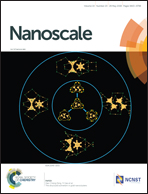Toxicity assessment and mechanistic investigation of engineered monoclinic VO2 nanoparticles†
Abstract
Growing interest in monoclinic VO2 nanoparticles (NPs) among consumers and the industries of window coatings, solar sensors etc. has brought particular attention to their safety concerns. The toxicity of this new class of nanomaterials in bacterial ecosystems has not yet been evaluated. The degree of crystallinity is a significant parameter that determines the performance of materials. However, the previously reported methods for toxicity assessment have neglected its influence. In this work, we systematically evaluated the toxicity of VO2 NPs with different degrees of crystallinity to four typical bacterial strains and studied the influence of physicochemical properties and aging treatment on their antibacterial effect. The results showed that the toxicity of VO2 nanoparticles was very low. Interestingly, we found that antibacterial properties of VO2 NPs were dependent on both bacterial strains and VO2 particle properties. In addition, the highly crystalline VO2 NPs were more toxic than normal and industrial VO2 particles. We attribute the crystallinity-related toxicity to the dissolved vanadium, the physical interactions between the bacteria and particles, and the generation of reactive oxygen species, as supported by our experimental results and theoretical calculation.



 Please wait while we load your content...
Please wait while we load your content...